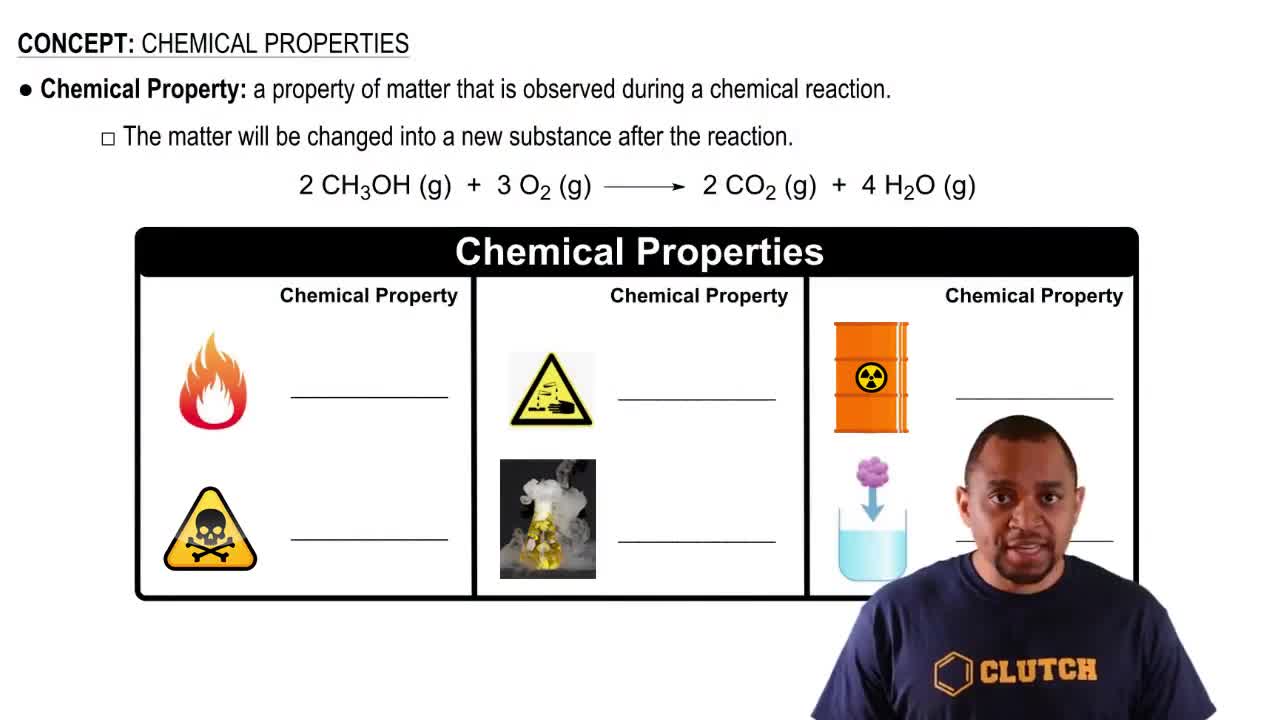Balance the following equations and indicate whether they are combination, decomposition, or combustion reactions: (a) C3H6(s) + O2(g) → CO2(g) + H2O(l)
Determine the formula weights of each of the following compounds: (a) lead(IV) chloride (b) copper(II) oxide (c) iodic acid, HIO3 (d) sodium perchlorate, NaClO4
 Verified step by step guidance
Verified step by step guidanceKey Concepts
Molar Mass Calculation

Chemical Nomenclature

Polyatomic Ions

Balance the following equations and indicate whether they are combination, decomposition, or combustion reactions: (b) NH4NO3(s) → N2O(g) + H2O(g) (c) Zn(OH)2(s) → ZnO(s) + H2O(l) (d) Ag2O(s) → Ag(s) + O2(g)
Balance the following equations and indicate whether they are combination, decomposition, or combustion reactions: (a) NaClO3(s) → NaCl(s) + O2(g) (b) NH4OH(aq) → H2O(l) + NH3(g) (c) K(s) + Cl2(g) → KCl(s) (d) C2H5OH(l) + O2(g) → CO2(g) + H2O(l)
Determine the formula weights of each of the following compounds: (a) Butyric acid, CH3CH2CH2COOH, which is responsible for the rotten smell of spoiled food (b) sodium perborate, NaBO3, a substance used as bleach (c) CF2Cl2, a refrigerant known as Freon (d) NaHCO3, known as baking soda and used in bread and pastry baking (e) isopentyl acetate, CH3CO2C5H11, responsible for the odor of bananas.
Calculate the percentage by mass of oxygen in the following compounds: (a) vanillin, C8H8O3
Calculate the percentage by mass of oxygen in the following compounds: (b) isopropyl alcohol, C3H8O
